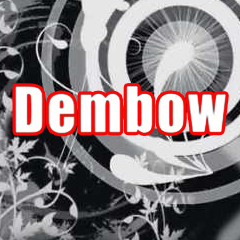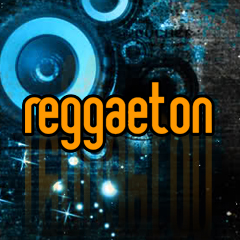Cumbia
ON AIR - PROGRAMMING
Flowing directly from Colombia and throughout South America, heating up the boiling city with colored skirts, ass shaking, and vibrating bodies. It makes for a lively atmosphere. Listen to Cumbia music, a popular American Latin dance music genre, developed in the Caribbean coasts of Panama and Colombia as a courtship dance. Cumbia is a traditional music genre that originated in Colombia, with influences from African and European cultures. This delightful blend of sounds creates a type of optimistic, joyful melody that delights the senses. The rhythms and beats make it difficult not to move as the tunes energise your every footstep. Cumbia continues to capture more enthusiasts with each passing day; it's well-known among Latinx music fans around the world. This genre features peasant people represented as dancers and performers wearing colorful traditional style clothing while they embrace improvisation. Stories highlighted in cumbia lyrics represent elements of love, liberation, sexuality and cultural fights against oppression. Typical Cumbia bands will sometimes include multiple percussion instruments layered on top of acoustic guitar, accordion, saxophone, brass and other traditional and contemporary sounds producing a captivating blend accepting an ever expanding list of creative ideas contributing to its charm. A truly remarkable style beloved by many! Listen to a playlist with the cumbia music, a latin sound that will give you energy and power from south america
The Joyful Journey of Cumbia: Bringing Color and Rhythm to the World
Have you ever been to a party where the room was filled with vibrant colors and lively music that made you want to dance? Chances are, you were listening to Cumbia, a popular music genre that hails from Colombia. This joyful and upbeat genre has been around for centuries and continues to be loved by people all over the world. In this article, we'll take a closer look at the history and significance of Cumbia, and why it continues to capture the hearts of music lovers everywhere.
Cumbia originated from the Caribbean coasts of Panama and Colombia as a courtship dance. Its upbeat rhythms and catchy melodies soon caught the attention of many, and it began to spread throughout Latin America. The word Cumbia is derived from an African word meaning dance, which shows the strong African influence on the genre. Over the years, it has evolved into what we now know as Cumbia, a cheerful and colorful music genre that celebrates life.
One of the unique characteristics of Cumbia is the way it represents the people who perform it. Peasant people are often the main performers, wearing colorful traditional style clothing while they embrace improvisation. This adds to the authenticity of the genre and makes it more relatable to those who come from humble backgrounds. The stories highlighted in Cumbia lyrics often represent elements of love, loss, and everyday life, making it easier for listeners to connect with the music.
Cumbia continues to capture more enthusiasts with each passing day. Its foundation is a delightful blend of sounds from African and European cultures, creating a type of optimistic and joyful melody that delights the senses. It's a genre that brings people together, regardless of their race, ethnicity, or language, as the music is well-known among Latinx music fans around the world. It's hard not to move your feet when the beats kick in, and the colorful skirts start to flow.
Cumbia has had a significant impact on the music world, and its influence can be heard in various other genres such as salsa, reggaeton, and bachata. Many modern artists have turned to Cumbia for inspiration, and the genre continues to evolve to this day. Further, it has spread beyond Latin America and has become a global phenomenon, with its cheerful tunes gaining recognition and appreciation worldwide.
In conclusion, Cumbia is a music genre that has come a long way since its humble origin. It's a genre that represents the culture, history, and people of Colombia and Latin America. Its lively beats and catchy melodies have captured the hearts and souls of people worldwide, making it one of the most well-known Latin music genres. It's a genre that transcends borders and brings people together - a true representation of the power of music. So next time you find yourself in a party with music that makes you want to dance, don't be surprised if it's Cumbia that's filling the room.
The Joyful Journey of Cumbia: Bringing Color and Rhythm to the World
Have you ever been to a party where the room was filled with vibrant colors and lively music that made you want to dance? Chances are, you were listening to Cumbia, a popular music genre that hails from Colombia. This joyful and upbeat genre has been around for centuries and continues to be loved by people all over the world. In this article, we'll take a closer look at the history and significance of Cumbia, and why it continues to capture the hearts of music lovers everywhere.
Cumbia originated from the Caribbean coasts of Panama and Colombia as a courtship dance. Its upbeat rhythms and catchy melodies soon caught the attention of many, and it began to spread throughout Latin America. The word Cumbia is derived from an African word meaning dance, which shows the strong African influence on the genre. Over the years, it has evolved into what we now know as Cumbia, a cheerful and colorful music genre that celebrates life.
One of the unique characteristics of Cumbia is the way it represents the people who perform it. Peasant people are often the main performers, wearing colorful traditional style clothing while they embrace improvisation. This adds to the authenticity of the genre and makes it more relatable to those who come from humble backgrounds. The stories highlighted in Cumbia lyrics often represent elements of love, loss, and everyday life, making it easier for listeners to connect with the music.
Cumbia continues to capture more enthusiasts with each passing day. Its foundation is a delightful blend of sounds from African and European cultures, creating a type of optimistic and joyful melody that delights the senses. It's a genre that brings people together, regardless of their race, ethnicity, or language, as the music is well-known among Latinx music fans around the world. It's hard not to move your feet when the beats kick in, and the colorful skirts start to flow.
Cumbia has had a significant impact on the music world, and its influence can be heard in various other genres such as salsa, reggaeton, and bachata. Many modern artists have turned to Cumbia for inspiration, and the genre continues to evolve to this day. Further, it has spread beyond Latin America and has become a global phenomenon, with its cheerful tunes gaining recognition and appreciation worldwide.
In conclusion, Cumbia is a music genre that has come a long way since its humble origin. It's a genre that represents the culture, history, and people of Colombia and Latin America. Its lively beats and catchy melodies have captured the hearts and souls of people worldwide, making it one of the most well-known Latin music genres. It's a genre that transcends borders and brings people together - a true representation of the power of music. So next time you find yourself in a party with music that makes you want to dance, don't be surprised if it's Cumbia that's filling the room.
2023-05-13
The tradicional Latin American music, the cumbia!
Rooted in the African, European, and indigenous music, Cumbia emerged as one of the popular music in Latin America. Although the birthplace of Cumbia remains debated within the folklorist, between Magdalena, Atlantico, or Panama, it traditionally originated from Colombia...read more
Tag: cumbia, colombia, Latin American, tradition
What are you thinking about?



